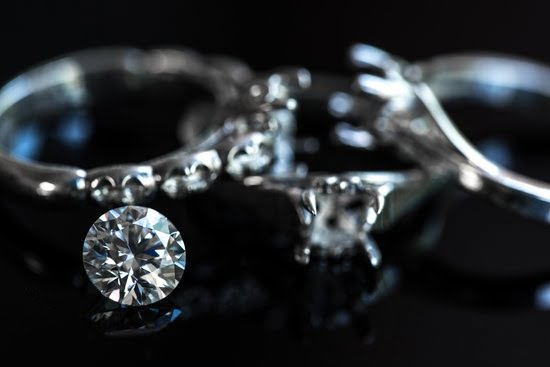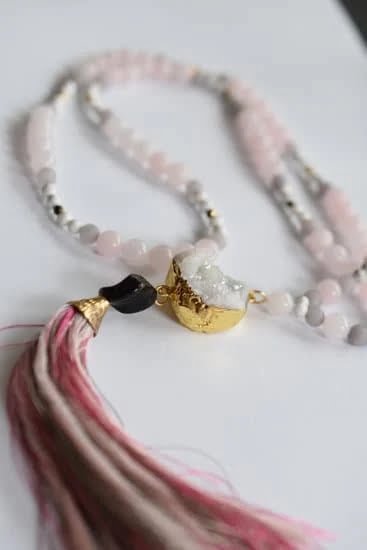Why is gold used in jewelry? Gold has been a popular choice for jewelry making for centuries, and its allure and significance continue to endure.
In this article, we will explore the rich history of gold in jewelry, its cultural and symbolic significance, the unique properties that make it ideal for crafting exquisite pieces, and its value as an investment and timeless adornment. From its use in ancient civilizations to modern trends and sustainability in the industry, gold remains a cherished metal for creating stunning jewelry.
Gold has held a special place in the world of jewelry since time immemorial. Its use can be traced back to ancient civilizations, where it was revered for its rarity, beauty, and perceived connection to the divine. Throughout history, different cultures have assigned unique meanings to gold, incorporating it into their traditions and adorning themselves with gold jewelry for various ceremonial and symbolic purposes.
Beyond its historical significance, gold possesses unique properties that make it an ideal metal for crafting jewelry. Its malleability allows artisans to create intricate designs and delicate pieces that stand the test of time. Additionally, gold’s lustrous shine and resistance to tarnishing make it a sought-after material for expressing elegance and sophistication through jewelry.
In the following sections of this article, we will delve deeper into the history of gold in jewelry-making, its symbolism across different cultures, the craftsmanship behind creating gold jewelry, as well as its value as both an investment and a symbol of enduring love and status. Join us on this journey through the captivating allure of gold in jewelry.
The History of Gold in Jewelry
Gold has been used in jewelry throughout history, with its allure dating back to ancient civilizations. In fact, the use of gold in jewelry can be traced back to around 4000 BC in what is now Eastern Europe. Since then, it has been prized for its rarity, durability, and luster, making it an ideal material for crafting exquisite jewelry pieces that stand the test of time.
One of the earliest civilizations to extensively use gold in jewelry was ancient Egypt. The Egyptians viewed gold as a symbol of immortality and eternal life, and it was often associated with their gods and pharaohs. Elaborate pieces such as pectorals, necklaces, and headdresses were crafted using intricate techniques that showcased the craftsmanship of the time.
From there, gold continued to hold significant cultural and symbolic value in various civilizations around the world. In ancient Rome, gold jewelry was a status symbol reserved for the elite class. It was also worn as a form of protection or as an offering to the gods. Similarly, in ancient China, gold was highly prized not only for its beauty but also for its spiritual significance.
The appeal of gold in jewelry has transcended time and cultures, with its enduring popularity continuing into modern times. Today, it remains a coveted metal for crafting fine jewelry pieces that are treasured for their elegance and timeless beauty.
| Significance | Data |
|---|---|
| Ancient Egyptian use | Around 3000 BC |
| Roman symbolism | Status symbol and offering to gods |
| Modern appeal | Continued popularity in modern times |
The Significance of Gold in Different Cultures and Traditions
Gold holds a special place in the cultures and traditions of people around the world. Here are some reasons why gold is used in jewelry in various cultures:
- In ancient Egypt, gold was considered the flesh of the gods, and it was believed that wearing gold jewelry would bring blessings from the deities. It was also commonly used in burial rituals to ensure prosperity in the afterlife.
- In Indian culture, gold is associated with purity, prosperity, and good fortune. It is often given as a gift during weddings and other important ceremonies as a symbol of love and blessings for the future.
- In Chinese tradition, gold represents wealth and success. During festivals and celebrations, it is customary to give gold jewelry as a sign of good luck and prosperity.
- In many African cultures, gold jewelry is an expression of status and power. It is often worn during important ceremonies such as weddings, initiation rites, and tribal gatherings to signify wealth and prestige.
- Throughout history, the use of gold in jewelry has been a way for cultures to showcase their craftsmanship and artistic abilities. From intricate filigree work to bold statement pieces, each culture has its own unique style when it comes to creating gold jewelry.
The significance of gold in different cultures and traditions highlights its universal appeal as a symbol of beauty, wealth, love, and tradition – which is why this precious metal continues to be treasured in jewelry making across the globe.
The Unique Properties of Gold That Make It Ideal for Jewelry Making
Gold has been a popular choice for jewelry making for centuries, and its unique properties play a significant role in its desirability. Here are some of the key properties that make gold ideal for crafting exquisite jewelry:
- Ductility and malleability: Gold is highly ductile and malleable, meaning it can be easily shaped into intricate designs and fine details. Jewelry artisans appreciate these properties as they allow them to create elaborate pieces that retain their form and beauty over time.
- Resistance to tarnishing and corrosion: One of the reasons why gold is used in jewelry is its resistance to tarnishing and corrosion. This ensures that gold jewelry maintains its luster and beauty with minimal maintenance, making it a practical choice for everyday wear.
- Versatility in alloying: Pure gold is too soft for practical use in jewelry, so it is often alloyed with other metals to increase its strength and durability. This versatility allows for the creation of different types of gold used in jewelry, such as yellow gold, white gold, and rose gold, catering to diverse aesthetic preferences.
Gold’s unique combination of properties makes it an ideal material for creating timeless, high-quality jewelry that can be cherished for generations. Whether worn as a symbol of love or as a sign of prosperity, the allure of gold in jewelry continues to endure through the ages.
The Symbolism of Gold in Jewelry
In addition to symbolizing wealth, gold is also closely connected to social status. Throughout history, wearing gold jewelry has been a way for individuals to express their position within society. In many cultures, the amount and style of gold jewelry worn by a person can communicate their rank or standing in the community. From intricate crowns worn by royalty to delicate chains adorned by the elite, gold has long been an emblem of prestige and exclusivity.
Moreover, gold holds significance in the realm of love and relationships. The giving of gold jewelry is often associated with expressions of love, admiration, and commitment. Whether as an engagement ring or a gift on special occasions such as weddings or anniversaries, gold jewelry symbolizes enduring love and emotional connection between individuals. Its timeless nature reflects the everlasting bond shared between loved ones.
| Symbolism | Association |
|---|---|
| Wealth | Prosperity and affluence |
| Status | Prestige and exclusivity |
| Love | Enduring bonds and commitment |
The Different Types of Gold Used in Jewelry
When it comes to jewelry, the type of gold used can have a significant impact on the overall look and feel of a piece. Gold is a versatile metal that can be crafted into different colors, each with its own unique appeal. The most common types of gold used in jewelry are yellow, white, and rose gold.
Yellow Gold
Yellow gold is the traditional and most classic choice for jewelry. Its warm, golden hue has been cherished for centuries and is often associated with luxury and opulence. Pure gold is naturally yellow, but it is often mixed with other metals such as silver and copper to increase its strength and durability for jewelry making.
White Gold
White gold has become increasingly popular in modern jewelry design. It is created by mixing pure gold with white metals such as nickel, palladium, or silver to achieve its silvery-white appearance. White gold is often plated with rhodium to enhance its brightness and mimic the look of platinum, making it a more affordable alternative.
Rose Gold
Rose gold, also known as pink or red gold, has gained popularity for its romantic and feminine appeal. This type of gold is created by adding copper alloy to pure gold to achieve its rosy hue. The varying proportions of copper give rise to different shades of rose gold, from subtle blush tones to deeper reds.
These different types of gold offer something for every taste and style, allowing jewelry lovers to express their individuality through their choice of metal. Whether it’s the classic elegance of yellow gold, the contemporary allure of white gold, or the romantic charm of rose gold, each type offers a distinctive aesthetic that adds depth and character to any piece of jewelry. And this versatility is one reason why gold continues to be prized in the world of jewelry making.
The Craftsmanship of Gold Jewelry
Gold jewelry has been meticulously crafted by artisans for centuries, and the process continues to evolve with modern innovations. The craftsmanship behind gold jewelry is a fascinating blend of traditional techniques and contemporary methods, reflecting the timeless elegance of this precious metal.
Artisan Techniques
Artisans have been working with gold for thousands of years, using age-old techniques such as hand forging, filigree work, and granulation to create intricate designs. Handcrafted gold jewelry requires a high level of skill and precision, as artisans mold and shape the metal into stunning pieces of wearable art. These traditional techniques are often passed down through generations, preserving the rich heritage of gold jewelry making.
Modern Innovations
In recent years, modern innovations have revolutionized the way gold jewelry is crafted. Advanced technology and machinery have allowed for more intricate and detailed designs, as well as increased efficiency in production. For example, 3D printing has emerged as a game-changing tool in creating complex gold jewelry pieces with unparalleled precision. Additionally, laser technology is used for engraving and embellishing gold jewelry, adding a new dimension to the artistry of craftsmanship.
The marriage of artisan techniques and modern innovations has resulted in a diverse range of exquisitely crafted gold jewelry that caters to varying tastes and styles. From traditional handcrafted designs to cutting-edge technological advancements, the craftsmanship behind gold jewelry continues to captivate aficionados around the world.
The Value of Gold in Jewelry
Gold has been used in jewelry for centuries, and its popularity shows no sign of waning. One of the reasons why gold is used in jewelry is its inherent value. As an investment, gold holds its worth over time, making it a desirable choice for those looking to invest in a piece that will retain its value.
Additionally, gold jewelry is often passed down as heirlooms from generation to generation, symbolizing family traditions and history. This makes gold jewelry not only a valuable possession but also a meaningful one.
Many people are drawn to gold jewelry for its timeless elegance. Gold’s lustrous shine and warm color have made it a favorite choice for both classic and modern designs. The versatility of gold allows it to be crafted into intricate designs or minimalist styles, making it suitable for various tastes and occasions. Whether worn as everyday pieces or for special events, gold jewelry exudes an air of sophistication and luxury that never goes out of style.
Apart from its financial and sentimental value, gold jewelry is also treasured for its enduring beauty. Unlike other metals that can tarnish or corrode over time, gold retains its shine and lustre with minimal care. Its durability makes it an ideal choice for pieces meant to be worn regularly, such as wedding bands or engagement rings. With proper maintenance, gold jewelry can last for generations, continuing to hold sentimental value as well as monetary worth.
Gold continues to be highly sought after in the world of jewelry due to these factors: its enduring financial value, sentimental significance as heirlooms, timeless elegance as a fashion statement, and prolonged durability with minimum upkeep upkeep requirements thereby proving itself an ideal choice in the realm of fine accessories.
The Future of Gold in Jewelry
In conclusion, the use of gold in jewelry has been a timeless tradition that has transcended various cultures and civilizations throughout history. The allure of gold in jewelry is not only deeply rooted in its historical significance but also in its unique properties that make it ideal for crafting exquisite pieces.
A key reason why gold is used in jewelry is due to its durability, malleability, and resistance to tarnishing, making it a practical choice for creating intricate designs and lasting pieces.
Furthermore, the symbolism of gold in jewelry as a representation of wealth, status, and love has made it a coveted material for generations. Whether it’s yellow, white, or rose gold, each type exudes its own sense of elegance and charm, offering versatility for different styles and preferences. The craftsmanship of gold jewelry continues to thrive through artisan techniques and modern innovations, ensuring that the artistry behind each piece remains unparalleled.
As the future of gold in jewelry unfolds, sustainability and ethical practices are becoming increasingly important within the industry. Consumers are now more conscious about where their gold comes from and how it is obtained, leading to a shift towards sustainable sourcing and responsible mining practices.
Despite evolving trends in fashion and design, the timeless elegance and value of gold in jewelry will undoubtedly continue to hold a special place in the hearts of people around the world. Ultimately, whether as an investment or an heirloom passed down through generations, gold will always remain a symbol of everlasting beauty and prestige.
Frequently Asked Questions
Why Do We Use Gold to Make Jewellery?
Gold is used to make jewelry because of its unique properties such as its resistance to tarnishing, its malleability, and its lustrous appearance. These characteristics make it an ideal material for creating intricate and detailed designs that can withstand daily wear.
What Is Gold Used for and Why Is It Important?
Gold is used in a variety of industries including electronics, medicine, and aerospace due to its excellent conductivity, corrosion resistance, and malleability. It is also important as a financial asset and a hedge against inflation, making it a valuable commodity for investors and central banks alike.
Why Is Gold Popular for Jewelry?
Gold is popular for jewelry due to its timeless appeal, rarity, and association with wealth and luxury. Its warm color complements a wide range of skin tones, making it a popular choice for adornment. Additionally, gold’s durability ensures that jewelry pieces made from it can last for generations, adding sentimental value to its aesthetic beauty.

Welcome to my jewelry blog! My name is Sarah and I am the owner of this blog.
I love making jewelry and sharing my creations with others.
So whether you’re someone who loves wearing jewelry yourself or simply enjoys learning about it, be sure to check out my blog for insightful posts on everything related to this exciting topic!





